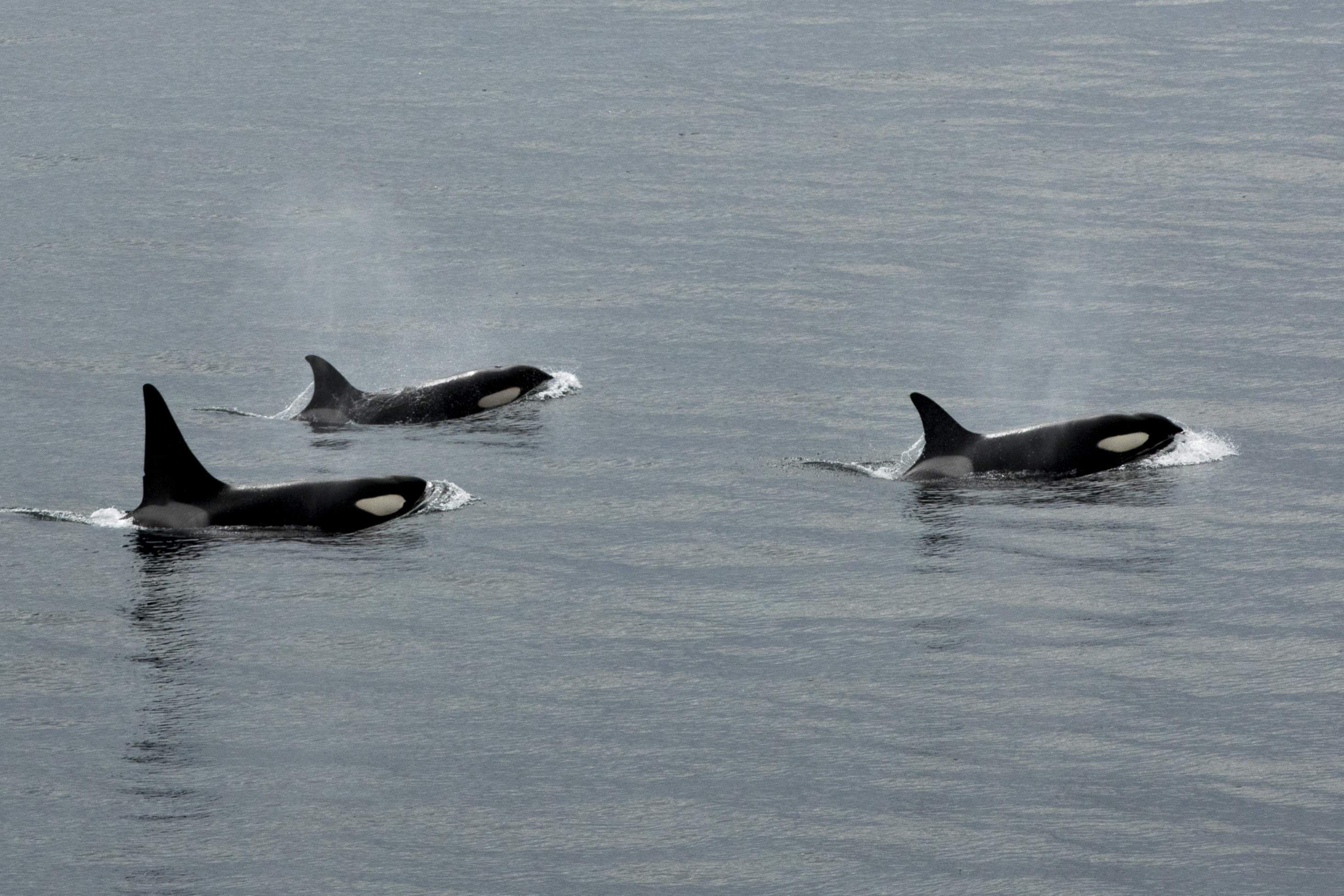
THE annual National Whale and Dolphin Watch is set to begin on Saturday 28 July until Sunday 5 August, with people from across the UK welcomed to sight the country’s underwater mammals.
Now in its 16th year, the event, which begun in 2002, has seen around 5,900 sightings of marine life from the Channel Islands to the tip of the Shetland Isles.
While sightings of dolphins have reached record levels this year across the country, many sightings have also been recorded of Scotland’s resident orca pod, aptly named the West Coast Community.
The Community is the only resident group of killer whales in the UK, but their existence in our waters could be on borrowed time. Read on to discover more about the whales who call our shores home and how to tell if you’ve spotted one during the National Whale and Dolphin watch this year.
Facing extinction?
The pod have experienced a number of challenges in recent years, most famously one of their female members, Lulu washed up dead in 2016 on Tiree. Lulu had been found with one of the highest concentrations of toxic pollutants ever recorded in a marine mammal in her body.
The pollutants found in Lulu, called PCBs, are known to cause infertility, which shows strong evidence as to why she was never able to have a calf.
There are worries that the entire West Coast Community is barren thanks to the high concentration of PCBs found in UK shores. The pollutant was banned in the 1970s, but is still clearly very prevalent in our waters. Lulu’s body contained 950mg/kg, of PCBs – more than 100 times the 9mg/kg limit above which damage to the health of marine mammals is known to occur.
Sadly these latest findings add to strong evidence that the pod is doomed to extinction – there are no records of any new calves being born in the last 23 years.
Where can you see the West Coast Community?
Living up to their name, the orcas are usually sighted around the Hebrides, and north west coasts, however recent sightings also include the Firth of Clyde and Orkney.
They’ve also been known to roam a much bigger area to the west of the British Isles, from the southern Irish Sea and west along the entire length of Ireland’s Atlantic seaboard.
What do they eat?
It’s now a known fact that different orca pods across the planet have differing diets, hunting techniques and languages.
The West Coast Community comes under the second ‘ecotype’ of killer whales in the North Atlantic identified by scientists. This means they are specialist feeders who prey exclusively on other marine mammals such as porpoises, dolphins, whales and seals. Minke whales have been seen abruptly turning and fleeing when the West Coast pod passes nearby.
The other type prey predominantly on fish.
How can you tell it’s the West Coast Community you’ve spotted?
Scotland welcomes other migratory orca pods from Iceland to its waters during certain times of the year. However it has been noted that these pods do not interact with the West Coast Community.
Certain members of the pod have very noticeable characteristics, including John Coe, a bull from the Community who has a notch on his dorsal fin and a missing chunk on his fluke. Scientists believe this may have been the result of a shark attack.
The Community are also identifiable from other groups of killer whales seen around the UK by their downwards sloping eye patch and larger size – they are around a metre longer than their Nordic killer whale neighbours.
The groups’ most common relations are found thousands of miles away in the Antarctic.
How many of them are there?
The orcas in the West Coast Community are often spotted together in their group of eight, but also in smaller groupings, and some of them seem to prefer the company of certain individuals.
John Coe, for instance, is frequently observed swimming with a single female, who is thought to be his mother.
What are they called?
The West Coast Community consists of four males and four females, all aged between 20 and 60 years old. The earliest recordings of the group come from 1977.
Their names are John Coe, Comet, Floppy Fin, Aquarius (males) and Nicola, Moneypenny, Puffin and Occasus (females).
As well National Whale and Dolphin Watch relying on the public’s sightings for research, organisations like the Hebridean Whale and Dolphin Trust are also asking for sightings information from the community.
In addition the group are up for an award for their Whale and Dolphin Track App at the National Lottery Awards.
You can vote for them here in the awards, to enable the Mull based group to continue essential conservation and educational work to help Scotland’s marine life.

Enjoy the convenience of having The Sunday Post delivered as a digital ePaper straight to your smartphone, tablet or computer.
Subscribe for only £5.49 a month and enjoy all the benefits of the printed paper as a digital replica.
Subscribe


